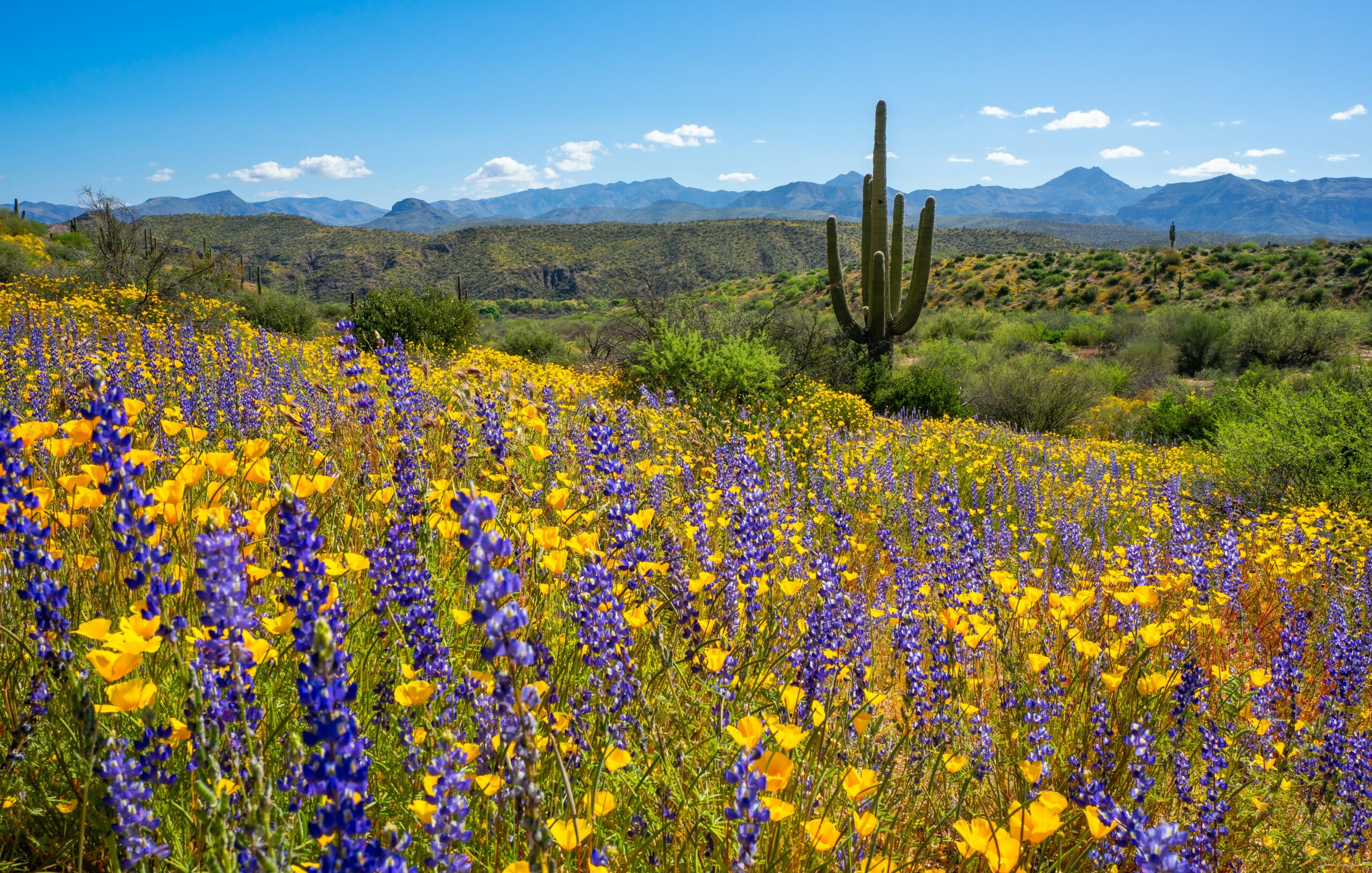For most, Arizona conjures up images of sweeping painted deserts, towering saguaro cacti, isolated winding highways and endless sunshine. Yet that’s just one piece of this tremendous and remarkably diverse state.
Home to the fifth-largest city in the US, one of the Seven Natural Wonders of the World, three national parks and nearly 21 million acres of National Forest land, Arizona is defined by stark contrasts. One moment you’re wearing a t-shirt walking in a hip city neighborhood, and a couple of hours later, you’re bundled up skiing at 10,000ft. This is a place where spiny cacti meet lush pine forests, where ancient cliff dwellings sit not far from retro neon signs along Route 66, and where Tucson – one of the USA’s two UNESCO Cities of Gastronomy – dishes out some of the best food the country.
With endless ways to get outdoors and new cultural experiences to discover, where do you start? The Arizona you want to experience – whether through dreamy deserts, through vibrant cities, in the high country or on scenic drives – is totally up to you.
When should I go to Arizona?
This depends on what kind of experience you envision and where you’re headed. In the southern part of the state, which includes Phoenix and Tucson, winter into early spring (December through April) is ideal weather-wise, with daytime temperatures ranging from the high 60°s to low 80°s F (19° to 28°C). The downside? Everyone wants to be in Arizona this time of year, from hiking and golf enthusiasts to sunshine-seeking visitors from colder climates and Spring Training baseball fans. Expect maximum traffic, crowds and rates for services like rental cars and lodging.
Up north, as Arizonans like to say, winter is very different. Towns in the White Mountains sit at elevations well over 8000ft (2438m) and soaring 10,000ft-to-12,000ft (3048m-to-3657m) mountains dot the San Francisco Peaks near Flagstaff – so snow is as abundant as sunshine.
Arizona summers, on the other hand, aren’t for the faint of heart – at least not in the desert. Temperatures regularly surpass 110°F (43°C), and during monsoon season (June through September), the weather alternates between stiflingly dry and suffocatingly humid. Higher-elevation destinations such as Flagstaff and the Grand Canyon are pleasant and drastically cooler, making summer the perfect time to explore northern Arizona.
At an elevation 4350ft…
Click Here to Read the Full Original Article at Stories – Lonely Planet…
